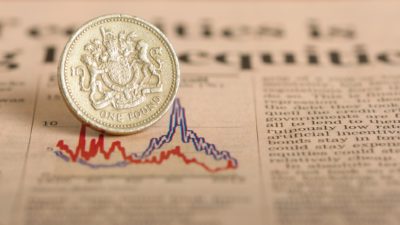 The insurance sector has undergone a fantastic re-rating over the last year. While the FTSE 100 is only 4% higher than it was in March 2013, Legal & General Group (LSE: LGEN) (NASDAQOTH: LGGNY.US) has gained 42%, while Aviva is up 60% and Prudential has risen by 35%.
The insurance sector has undergone a fantastic re-rating over the last year. While the FTSE 100 is only 4% higher than it was in March 2013, Legal & General Group (LSE: LGEN) (NASDAQOTH: LGGNY.US) has gained 42%, while Aviva is up 60% and Prudential has risen by 35%.
Legal & General’s 2014 prospective yield of 4.5% is the highest of these three firms, making it a popular choice with income investors. However, after such a long run of growth, it’s more important than ever to look for potential pitfalls.
Using three financial ratios of the kind often used by credit rating agencies, I’ve taken a closer look at Legal & General’s latest results to see if I can spot any potential red flags.
Should you invest £1,000 in Legal & General right now?
When investing expert Mark Rogers has a stock tip, it can pay to listen. After all, the flagship Motley Fool Share Advisor newsletter he has run for nearly a decade has provided thousands of paying members with top stock recommendations from the UK and US markets. And right now, Mark thinks there are 6 standout stocks that investors should consider buying. Want to see if Legal & General made the list?
1. Operating profit/interest
What we’re looking for here is a ratio of at least 1.5, to show that Legal & General’s operating earnings cover its interest payments with room to spare:
Operating profit from business units / group finance costs
£1,329m / £127m = 10.5 times cover
Legal & General’s operating profits cover its interest payments (those related to its business, not investments) by more than 10 times, so there’s no problem here.
2. Debt/equity ratio & cash generation
Commonly referred to as gearing, this is simply the ratio of debt to shareholder equity, or book value (total assets – total liabilities).
Legal & General’s corporate debt levels are very modest, and the firm had debts of just £3.2bn at the end of 2013, offset by cash and cash equivalents of £17.4bn, which give a net cash position of more than £14bn.
The firm’s ability to generate cash is impressive — in 2013, Legal & General generated surplus cash of more than £1bn, easily covering interest and dividend payments.
3. Return on equity
Return on equity (RoE) is a useful way to measure the performance of financial firms, as it shows how much profit was generated compared to the book value (equity) of the firm.
An RoE of 15% or above is desirable, and Legal & General generated a RoE of 16% in 2013, up from 15% during the previous two years.
How safe is Legal & General?
Trading on a trailing P/E of 15.5, Legal & General’s shares aren’t cheap at the moment, but the firm’s size, cash generation, and well-covered dividend, should make it a very safe long-term buy, regardless of any short-term issues that might arise.







